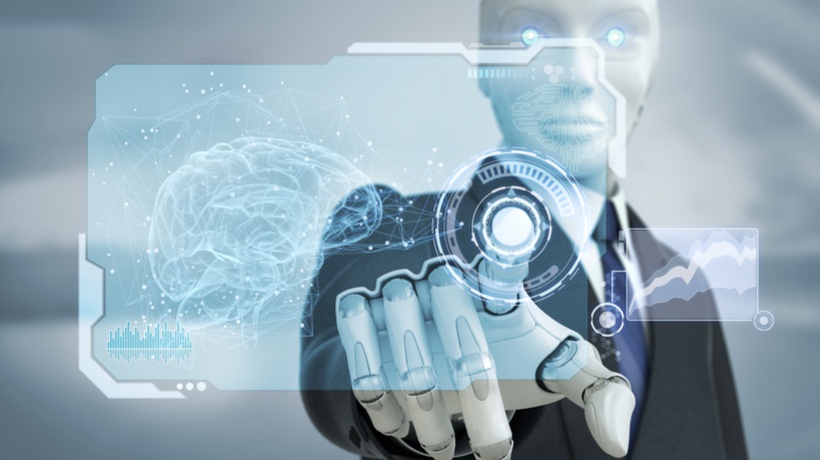Siri, What Is Artificial Intelligence?
You probably see the irony in asking one the most common AI virtual assistants in the world about its own nature. Gone are the days of when mentioning AI brought to mind images of humanoid robots taking over the world, not just because robots are not rebelling against us—not yet, anyway—but because AI is already a big part of our daily lives, perhaps bigger than some of us realize. By the textbook definition, AI is “a computer system capable of performing tasks that normally require human capabilities, such as visual perception, language recognition, decision-making, and language translation” [1].

Does that ring any bells? What about email filters? Or the automated support service you get when you call your internet provider? Both examples of AI live in the here and now. According to Gartner, investment in AI has grown exponentially: from $282 million in 2011 to $2.4 billion in 2015, a 746 percent increase in five years [2]. According to Statista, in 2018 the global AI market reached approximately $7.35 billion [3].
Virtual Assistants: Artificial Intelligence, Real Improvements In L&D
The most common examples of AI we currently have are virtual assistants. You know the two big ones by name: Google Assistant and Alexa (Amazon). These are language recognition systems that learn from your choices and preferences.
“Google Assistant can help you organize your meetings and Alexa can make your shopping easier. Yet, if you apply these same pieces of technology to other purposes, you can achieve different results” says Adrian Soto, Director of Future Technologies at SweetRush SPARK.
The “other purposes” we’re talking about today are, of course, Learning and Development (L&D).
“AI is a great source for just-in-time information,” says Mary Gannon, PhD, Senior Learning Strategist at SweetRush. “A big part of L&D is not just formal learning. It is also what happens on the job. That’s when AI comes in through internet searches and other performance support systems that can help people learn what they need just in time”.
Justin Mitchell, Creative Engineer at SweetRush, adds:
“One of the things lacking in L&D is smarter learning paths. With AI, we can learn from the user; we can understand what they're good at, what they struggle with, and adapt. This allows us to show them only information that is relevant to them, personalized”.
AI can provide insights based on the data it collects and analyzes from the learner’s usage. As Mitchell explains, this facilitates the creation of custom learning programs. AI virtual assistants can then make suggestions or interact with the learner in a way that is useful to that particular case, instead of providing a generic response.
Recently, the SweetRush SPARK team worked on a proof of concept, a code-free version of Alexa, for a large client-partner.
“With our Skill Studio Alexa Builder, anyone can input a knowledge base of common questions and answers that learners can access on demand with just their voice,” explains Mitchell. “The CMS we’ve created allows our client-partners to instantly add, update, and improve the Alexa Skills they create without any knowledge of coding or even needing to understand how Alexa works. It’s a great tool for on-demand learning”.
Oh, The Virtual Assistants You’ll See!
What about the future? It’s hard to say since AI is constantly being improved—as are other emerging technologies. The numbers also predict that the usage of AI will continue to grow: Gartner projects AI will power 85 percent of customer service interactions by 2020, and will drive up to $33 trillion of annual economic growth [2].
As for what’s to come for AI virtual assistants in L&D and the workplace, Forbes suggests that virtual assistants could become mainstream in corporate America. They could be used as a medium for employees’ most frequently asked questions, as a valuable tool for recruiting and talent acquisition, and, of course, as teaching assistants [4].
Soto can also see AI virtual assistants becoming a much more common and powerful tool for Instructional Designers.
“I think, in the future, we’ll be able to program virtual assistants so powerfully that learners will be able to have conversations with them,” he says. “That way, the learner could casually ask for information, or the other way around: The AI could ask questions of learners, testing them.”
Whatever the future may hold for AI virtual assistants, one thing is for sure: This technology is already among us, even if we don’t notice it. It will continue to transform the way we learn, and the way we design eLearning, for the better. Download the eBook Top Emerging Technology Trends And Their Impact On L&D to see how the emergence of virtual reality and augmented reality can open up new ways of working for L&D professionals. Learn why they are new powerful tools in teaching and affecting behavioral change and how they can help you achieve your business objectives.
If you want to discover more fantastic features you need to implement Virtual Reality in your organization, check out the webinar Virtual Reality: Real-World Hilton/SweetRush Project Case Studies. It is brought to you by SweetRush and teaches everything you need to know to run an exceptional VR learning program.
References
[1] Artificial Intelligence: Definition by Oxford Dictionaries
[2] 9 Artificial Intelligence Stats That Will Blow You Away
[4] The Future Of Work: The Intersection Of Artificial Intelligence And Human Resources









